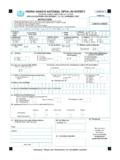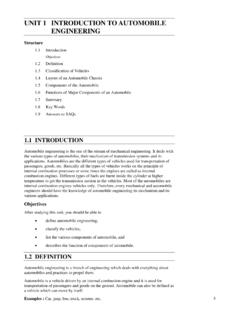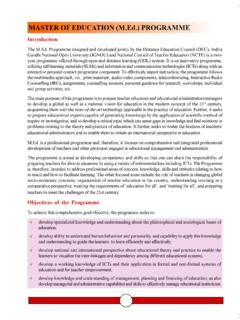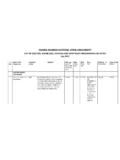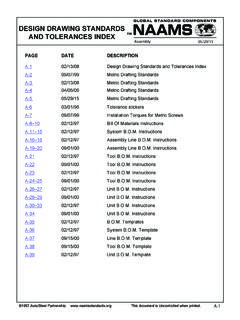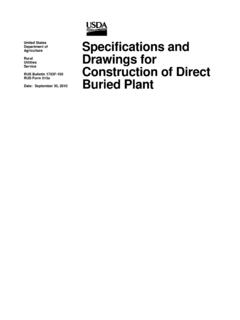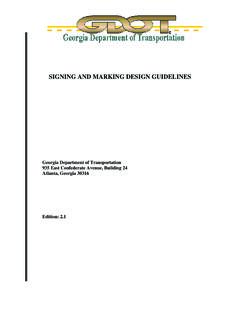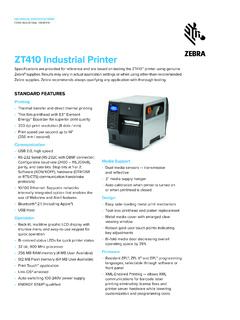Transcription of UNIT 8 COORDINATE MEASURING Coordinate Measuring …
1 97 COORDINATE MEASURING Machines (CMM) UNIT 8 COORDINATE MEASURING MACHINES (CMM) Structure Introduction Objectives Description of Parts CMM in Computer Aided Manufacturing Advantages of CMM Summary Key Words Answers to SAQs INTRODUCTION With the advent of numerically controlled machine tools, the demand has grown for some means to support these equipment. There has been growing need to have an apparatus that can do faster first piece inspection and many times, 100% dimensional inspection. The COORDINATE MEASURING Machine (CMM) plays a vital role in the mechanisation of the inspection process.
2 Some of the CMMs can even be used as layout machines before machining and for checking feature locations after machining. COORDINATE MEASURING machines are relatively recent developments in measurement technology. Basically, they consist of a platform on which the workpiece being measured is placed and moved linearly or rotated. A probe attached to a head capable of lateral and vertical movements records all measurements. COORDINATE MEASURING machines are also called MEASURING machines. They are versatile in their capability to record measurement of complex profiles with high sensitivity ( m) and speed. In this unit, we will discuss the principle and the working of a COORDINATE MEASURING Machine (CMM).
3 Objectives After studying this unit, you should be able to familiarise yourself with parts of a CMM, and understand the principle and the working of a CMM. DESCRIPTION OF PARTS Co-ordinate MEASURING Machines are built rigidly and are very precise. They are equipped with digital readout or can be linked to computers for online inspection of parts. These machines can be placed close to machine tools for efficient inspection and rapid feedback for correction of processing parameter before the next part is made. They are also made more rugged to resist environmental effects in manufacturing plants such as temperature variations, vibration and dirt.
4 Important features of the CMMs are : (i) To give maximum rigidity to machines without excessive weight, all the moving members, the bridge structure, Z-axis carriage, and Z-column are made of hollow box construction. (ii) A map of systematic errors in machine is built up and fed into the computer system so that the error compensation is built up into the software. 98 Metrology and Instrumentation (iii) All machines are provided with their own computers with interactive dialogue facility and friendly software. (iv) Thermocouples are incorporated throughout the machine and interfaced with the computer to be used for compensation of temperature gradients and thus provide increased accuracy and repeatability.
5 A CMM consists of four main elements : Main Structure The machine incorporates the basic concept of three COORDINATE axes so that precise movement in x, y, and z directions is possible. Each axis is fitted with a linear measurement transducer. The transducers sense the direction of movement and gives digital display. Accordingly, there may be four types of arrangement : Cantilever The cantilever construction combines easy access and relatively small floor space requirements. It is typically limited to small and medium sized machines. Parts larger than the machine table can be inserted into the open side without inhibiting full machine travel.
6 Figure shows a cantilever structure. Figure : Cantilever Structure Bridge Type The bridge arrangement over the table carries the quill (z-axis) along the x-axis and is sometimes referred to as a travelling bridge. It is claimed that the bridge construction provides better accuracy, although it may be offset by difficulty in making two members track in perfect alignment. This is by far the most popular CMM construction. Figure shows a bridge structure. Figure : Bridge Structure 99 COORDINATE MEASURING Machines (CMM) Column Type The column type machine is commonly referred to as a universal MEASURING machine rather than a CMM.
7 These machines are usually considered gage room instruments rather than production floor machine. The direction of movements of the arms are as shown in Figure The constructional difference in column type with the cantilever type is with x and y-axes movements. Figure : Column Structure Gantry In a gantry type arrangement, arms are held by two fixed supports as shown in Figure Other two arms are capable of sliding over the supports. Movements of the x, y and z-axes are also as shown in Figure The gantry type construction is particularly suited for very large components and allows the operator to remain close to the area of inspection.
8 Figure : Gantry Structure horizontal Figure shows the construction of a horizontal structure. The open structure of this arrangement provides optimum accessibility for large objects such as dies, models, and car bodies. Some horizontal arm machines are referred to as layout machines. There are some horizontal machines where the probe arm can rotate like a spindle to perform tramming operations. Tramming refers to accurate mechanical adjustment of instrument or machine with the help of tram. Figure : horizontal Structure 100 Metrology and Instrumentation Probing System It is the part of a CMM that sense the different parameters required for the calculation.
9 Appropriate probes have to be selected and placed in the spindle of the CMM. Originally, the probes were solid or hard, such as tapered plugs for locating holes. These probes required manual manipulation to establish contact with the workpiece, at which time the digital display was read. Nowadays, transmission trigger-probes, optical transmission probes, multiple or cluster probes, and motorized probes are available. They are discussed in brief below: Inductive and Optical Transmission Probes Inductive and optical transmission probes have been developed for automatic tool changing. Power is transmitted using inductive linking between modules fitted to the machine structure and attached to the probe.
10 Figure shows a schematic of the inductive transmission probe. The hard-wired transmission probe shown is primarily for tool setting and is mounted in a fixed position on the machine structure. Figure : Inductive Probe System and Automatic Probe Changing The optical transmission probe shown in Figure allows probe rotation between gaging moves, making it particularly useful for datuming the probe. The wide-angle system allows greater axial movement of the probe and is suitable for the majority of installation. Figure : Optical Transmission Probe 101 COORDINATE MEASURING Machines (CMM) Motorized Probe With the motorized probe, 48 positions in the horizontal axis, 15 in the vertical axis can be programmed for a total of 720 distinct probe orientations.

